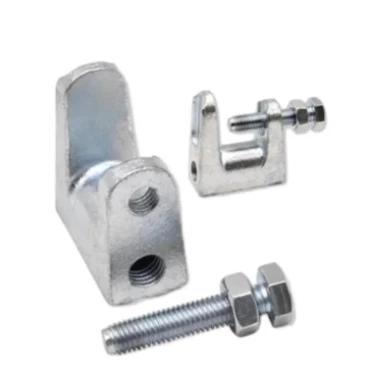नवम्बर . 07, 2024 13:11 Back to list
Exploring Various Types of I Beam Attachments for Structural Applications
Understanding I-Beam Attachments A Comprehensive Guide
I-beams, named for their distinctive I shape, are crucial components in the construction and engineering industries. They are widely used in structures ranging from bridges to skyscrapers and provide significant strength and support. However, the effectiveness of I-beams largely depends on how they are used, installed, and connected. One essential aspect that can significantly influence the performance of I-beams is their attachments. This article will explore I-beam attachments in detail, discussing their types, applications, and importance.
Types of I-Beam Attachments
I-beam attachments are methods or devices used to connect I-beams to other structural elements, such as other beams, columns, or floors. The choice of attachment can impact the overall integrity and strength of a construction project. Here are some common types of I-beam attachments
1. Welded Attachments Welding is one of the most prevalent methods for attaching I-beams. It provides a strong and continuous connection that can withstand significant loads. Welded attachments are suitable for both temporary and permanent installations and are often used in steel structures, where high rigidity and stability are required.
2. Bolted Attachments Bolting is another common technique. This method involves using bolts to connect I-beams to other elements. Bolted attachments offer flexibility, allowing for easy disassembly and reassembly if necessary. They are widely used in industrial applications where frequent modifications or maintenance may be required.
3. Pinned Connections Pinned attachments allow for rotational movement between connected members. This type of attachment is commonly used in truss systems and is beneficial in applications where movement due to thermal expansion or dynamic loads occurs.
4. Clamped Attachments Clamps can be used to attach I-beams to other structures without the need for permanent welding or bolting. This method is particularly useful when the beams need to be installed or removed frequently.
Applications of I-Beam Attachments
The applications of I-beam attachments are extensive and play a crucial role in various structural designs. Here are some key areas where I-beam attachments are utilized
i beam attachments

- Construction of Buildings I-beams serve as a primary load-bearing element in building frames. Properly designed attachments ensure that the load is distributed evenly across the structure, preventing failures during extreme conditions such as earthquakes or heavy winds.
- Bridges In bridge construction, I-beams are essential for supporting the deck and maintaining the integrity of the overall structure. High-strength attachments are vital for ensuring safety and durability, especially in areas experiencing significant traffic loads.
- Industrial Structures Factories and warehouses often employ I-beams for constructing frames that need to support heavy machinery. Here, attachments must be robust to handle dynamic loads and vibrations during operation.
- Scaffolding In temporary structures like scaffolding, I-beams are frequently used. Attachments in this context must balance strength with ease of assembly and disassembly, ensuring efficiency without compromising safety.
Importance of Properly Designed I-Beam Attachments
The significance of correctly designing I-beam attachments cannot be overstated. Weak or inappropriate attachments can lead to catastrophic failures, resulting in loss of life, property damage, and financial implications. Engineers must consider factors such as load bearing, environmental conditions, and the intended use of the structure when designing these connections.
Additionally, regular inspections and maintenance of I-beam attachments are crucial to ensure their long-term reliability. Corrosion, fatigue, and wear can compromise connections over time, necessitating prompt evaluation and repairs.
Conclusion
In conclusion, I-beam attachments play a pivotal role in the stability and strength of various structures. By understanding the types of attachments and their applications, as well as the importance of their proper design, engineers and construction professionals can enhance safety and performance in their projects. As the construction industry continues to evolve, innovative attachment methods and improvements in materials will further enhance the reliability and efficiency of I-beam applications.
-
The Ubiquitous Reach of DIN934 in Application Realms
NewsMay.16,2025
-
Exploring Different Bolt Types
NewsMay.16,2025
-
Cracking the Code of Sleeve Anchor Mastery
NewsMay.16,2025
-
Clamp Design Principles,Types and Innovations
NewsMay.16,2025
-
Artistry Inspired by the Humble Anchor Bolt
NewsMay.16,2025
-
A Deep Dive into Screw Types
NewsMay.16,2025


